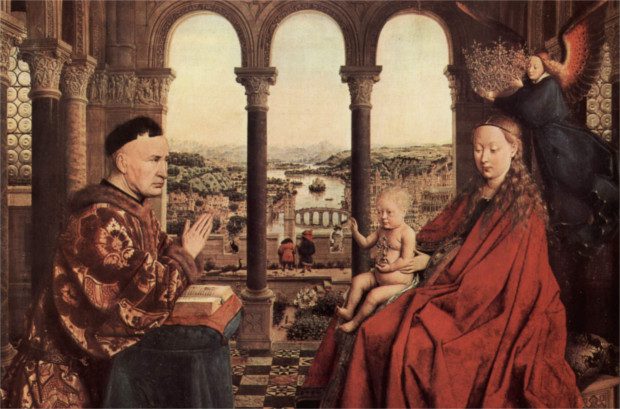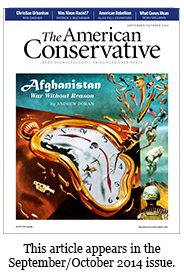New Urbanism of the Soul

We bought a house this past summer—a red-brick, cookie-cutter, ticky-tacky exurban Louisiana house of the sort that would make the combustible urbanist James Howard Kunstler’s hair catch on fire, if he still had hair.
It has been a good move. The neighbors are wonderful, the house is comfortable, and kids, they are everywhere. A Spielbergian Valhalla this is, and I’m glad we came. But as satisfying as our subdivision is, I can’t help thinking of how far my wife and I have come from the best neighborhood we ever lived in: Cobble Hill, Brooklyn, a 19th-century brownstone townhouse quarter, where we rented an apartment in the late 1990s.
Almost everything we wanted was a 10-minute walk from our front door. There was the greengrocer, the baker, the meat market, coffee shops, mom-and-pop restaurants, newsstands, churches, wine shops, movie theaters, bookstores, pocket parks, and playgrounds. Going out to do errands was an opportunity to see our neighbors and find out what was going on in the community, which at every level was built to human scale. And nobody needed a car.
Back then, in thinking about why Cobble Hill worked so well as a built environment, I realized how intrinsically conservative neighborhoods like it are. Though my wife and I might well have been the only Republicans in the entire 22-block neighborhood, the underlying structure of Cobble Hill, both physical and social, is profoundly traditionalist—and not because it is old.
Traditional conservatives, as distinct from our more libertarian brethren, believe that there is a sacred order to which individuals and communities must conform to flourish, and we have an obligation to protect, nurture, and develop that order as it comes to us through tradition. Many believe this refers only to morality, but others have a more holistic view: for them, the built environment must also in some sense embody that transcendent order and make it accessible.
When I first discovered the New Urbanism design movement as a resident of my old urbanist Brooklyn village, it made intuitive sense to me as a traditional conservative. At the time, I followed closely the often vicious intra-Catholic arguments over the liturgy and church architecture centered on whether the sacred order was properly expressed in post-conciliar practice. If the symbolic grammar of architecture mattered so much in church, might it also matter a great deal in the public square?
Reading the New Urbanists, the philosophical connection between traditionalism in politics and culture on the one hand and traditionalism in the built environment on the other came into sharp focus. The New Urbanist whose work perhaps makes the picture clearest is Philip Bess, author of Till We Have Built Jerusalem: Architecture, Urbanism, and the Sacred.
You can’t be a conservative or a Christian interested in architecture for long without running into Bess, the prominent Notre Dame architecture professor who advocates New Urbanism from within the Catholic intellectual tradition. Bess, 62, earned a master’s degree in theology from the Harvard Divinity School in 1976 before continuing on to get his master’s in architecture at the University of Virginia in 1981. Along the way, he converted to Catholicism.
“I had an intuition,” he says, “that I couldn’t articulate clearly—perhaps still can’t—about the spiritual significance of both persons and material things. I began to find a language for those intuitions in Catholic Christianity, and a discipline for pursuing them in architecture.” When New Urbanism emerged in the early 1990s, it made perfect sense to a Catholic humanist like Bess, a Thomist who believes that the purpose of the city is to provide an environment in which people can live virtuously—that is, achieve excellence in their vocations—in community. New Urbanism is not expressly theological; indeed, Bess concedes that most New Urbanists are secular progressives. But they are “implicitly Aristotelian,” he contends, because they affirm that there are certain design forms consonant with human nature.
“There’s a reciprocity between the individual and the culture,” he tells me. “The built environment can help sustain and nurture communities, but at the same time it’s the product of communities.” Whatever path New Urbanists follow in coming to that conclusion, the destination itself is what matters most. “In the absence of a conviction that the built environment matters, if there’s no common commitment to the place that we share, that we need places for ritual activity, whether it’s at the intimate scale of the family or more public rituals, then we are going to have a very hard time getting good urbanism off the ground.”
Bess has long served as an unlikely apostle to New Urbanists and conservatives alike, neither of whom seem to get the other. He tells New Urbanists that building good neighborhoods is a necessary condition for building good communities, but not a sufficient one: they must integrate their architectural vision with a broader vision of the good life. To put it in an Augustinian way, you can’t build a city fit for man without a vision of the city of God.
“Urbanism is about human flourishing, and human flourishing requires virtues, which are character dispositions that lead toward certain goods. People aren’t passive receivers of urbanism,” he says. “New Urbanists do a lot of things right, but good urbanism is more than bioswales”—environmentally friendly alternatives to storm sewers—“bike lanes, good coffee, and olive oil.”
Yet the bigger challenge, from Bess’s point of view, is to convince conservatives that New Urbanism is something they should embrace. In a 2005 address presenting New Urbanism to the right, Bess made the familiar Aristotelian claim that “the best life for human beings is the life of moral and intellectual excellence lived in community with others.” The built environment is an indispensible foundation for that.
The history of human settlement, he argues, shows that an ordered and just urban environment, the kind that resonates the best with human nature, is one in which the needs of daily life—commercial, recreational, religious, and so forth—are within easy walking distance. Postwar suburban sprawl, by contrast, separates communities by race and income and dissolves the idea of community as a coherent, organic entity. When the automobile freed modern people from geographical limits, it not only bound those without cars to their homes but also caused a moral dimension of social life that had been with us since time immemorial to fade from view.
Moreover, when we ceased to design and construct buildings in a pattern-language tradition based on human nature, we created places that were harder to love. James Howard Kunstler calls this “the geography of nowhere.” New Urbanism aims to recover the lost art of urban design as a way to reverse these conditions. What traditionalist conservatives are trying to do in politics, New Urbanists—even those who consider themselves progressives—are attempting in urban design.
But not everyone on the right sees it that way. Libertarians tend to view New Urbanism as a form of social engineering that stifles individual liberty. Even some socially conservative thinkers, who know why natural law matters to social constructs like marriage, puzzle over its connection to social constructs like neighborhoods. “I just spent a sabbatical year at Princeton as a Madison Fellow,” says Bess, referring to the program organized by law professor Robert P. George, “hanging out with brilliant and generous people, a lot of them natural-law political theorists. I think even contemporary natural-law folks, when confronted by a natural-law argument for urbanism, are less likely to find it convincing if they live in suburbia.”
But that doesn’t discourage Bess from continuing to teach and preach the New Urbanist gospel in the context of Catholic higher education. Renewing America architecturally and culturally will be the work of many generations.
“I’ve been pushing on my students the idea that after they get their professional credentials in order, and maybe before, instead of going to Manhattan or D.C. or San Francisco to participate in some kind of global architectural practice—and if their circumstances and temperament allow—they should go back home to pursue their professional lives,” says Bess. “Or, at least, that they should go somewhere, stay put, and make their life in that place, and resolve to make it beautiful.” For the past three years, Bess has been focusing his graduate urban-design studio around a project called After Burnham: The Notre Dame Plan of Chicago 2109—in part an homage to Daniel Burnham, a 19th-century urban planner and member of the parks-oriented City Beautiful movement. 
Burnham’s 1909 Plan of Chicago is a landmark document, the last great plan to bring principles of classical humanist architecture and urbanism to bear upon a modern metropolitan region. After Burnham imagines what Chicago—given its current architectural, social, and environmental order—might look like 100 years hence if the next century is informed by classical humanist urbanism and Catholic social teaching.
Bess says that After Burnham, which has not yet been completed and released, will address a range of issues—water, transportation, land use, agriculture, industry—across the entire Chicago-area landscape. In its architectural forms it will acknowledge sacred order in a modern and religiously pluralistic metropolis, under a legal regime of religious non-establishment. Bess believes the future of New Urbanism depends in part on the New Testament—if only traditional Christians will begin to learn from New Urbanism, and to think more deeply about urbanism as soulcraft.
“Religion, especially biblical religion and worshipping communities, will be part of any successful rebuilding,” he says. “I’m sure many people’s reaction to that will be, ‘Aren’t you following the news? Christianity and classic architecture and urbanism aren’t the wave of the future.’ I think that’s a very short-term view.”
Having settled comfortably in my suburban present, I hope for the sake of my children and grandchildren that Bess and his disciples find success connecting the architectural past to the architectural future. Amid the chaotic geography of nowhere, they are building bridges to somewhere.
Senior editor Rod Dreher blogs at TheAmericanConservative.com/Dreher.
This article was supported by a grant from The Richard H. Driehaus Foundation.
Comments